EdChoice’s Year in Review: Key Findings from 2023 Education Polling
What does 2023 reveal about the state of education in the United States? EdChoice’s monthly and semi-annual polling, conducted in collaboration with Morning Consult, has provided us with valuable insights.
Our surveys capture the thoughts and opinions of a nationally representative sample of roughly 2,200 American adults and with additional sampling, roughly 1,200 parents with children currently in K-12 education. We also administer semi-annual national surveys of teenagers and teachers.
Instead of combing through the hundreds of pages of top line findings and thousands of pages of demographic cross-tabulations and summarizing the most recent polling report from November (which we encourage you to check out), I wanted to give a short “year in review” style showcase of the big things we learned in 2023. They tended to fall into one of three categories: Models of consistency, most surprising, and future challenges.
Models of consistency:
1. Pessimism towards the direction of K-12 education persists.
Two key findings showed up consistently when we asked both parents and the general public how they felt about the direction of American K-12 education. First, parents consistently are more likely than the general public to say K-12 education is headed in the right direction. Secondly, all demographics are more optimistic about K-12 education at the local level than they are for K-12 education at the state and national levels.
The disparity between parents and the general population’s outlook was another important takeaway In November, 57 percent of parents felt K-12 education in their local school district is headed in the right direction, while only 36 percent of the general population feel optimistic towards the direction of their local school district.
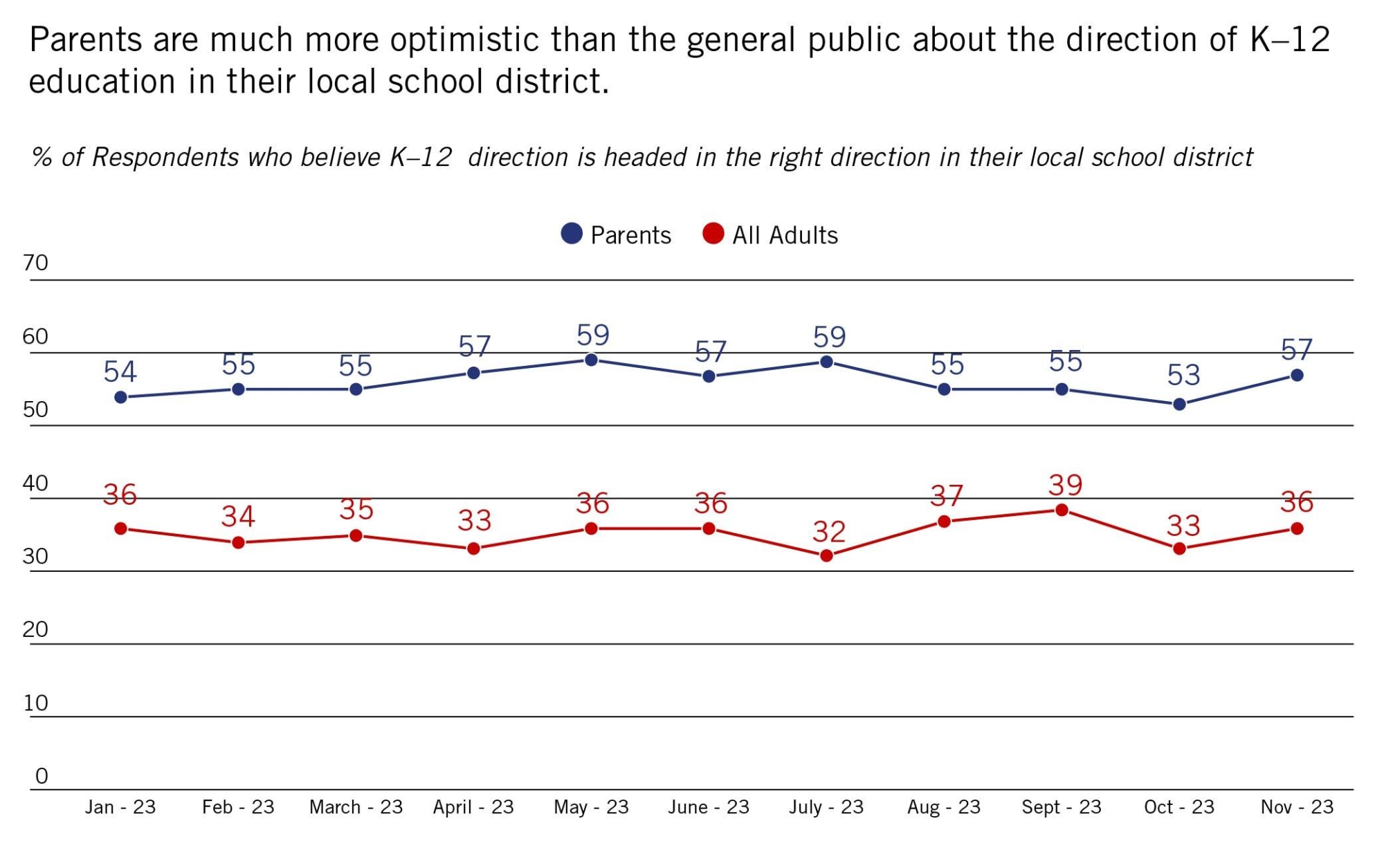
Overall, sentiment towards the direction of K-12 education is mixed at best, and negative nationally. For both parents and the general public, the percentage of both groups who feel K-12 education is on the right track is lower in 2023 compared to 2020 and 2021.
2. Americans consistently underestimate public school expenditures and funding.
More than half of Americans say public school funding is too low. — until they are shown how much schools actually spent. This held true throughout 2023.
When shown more how much district schools actually spend, the proportion of the general public who believe public school funding is too low drops to roughly one-third. Perhaps predictably, Americans are much more likely to say public school funding is about right or too high when shown actual district spending.
When asked to estimate public school expenditure, both parents and the general public estimate roughly $5,000 per student. The actual average expenditure per student across the country is slightly more than $14,000 per student.
3. Support for school choice policies remains strong.
Choice support was extremely consistent in 2023. Support among parents for ESAs, vouchers, charter schools, and open enrollment (when given a description) has held steady at around 75 percent. The general public is also very supportive of school choice policies, albeit at a slightly lower level. Roughly two-thirds of Americans support ESAs, vouchers, charter schools, and open enrollment.
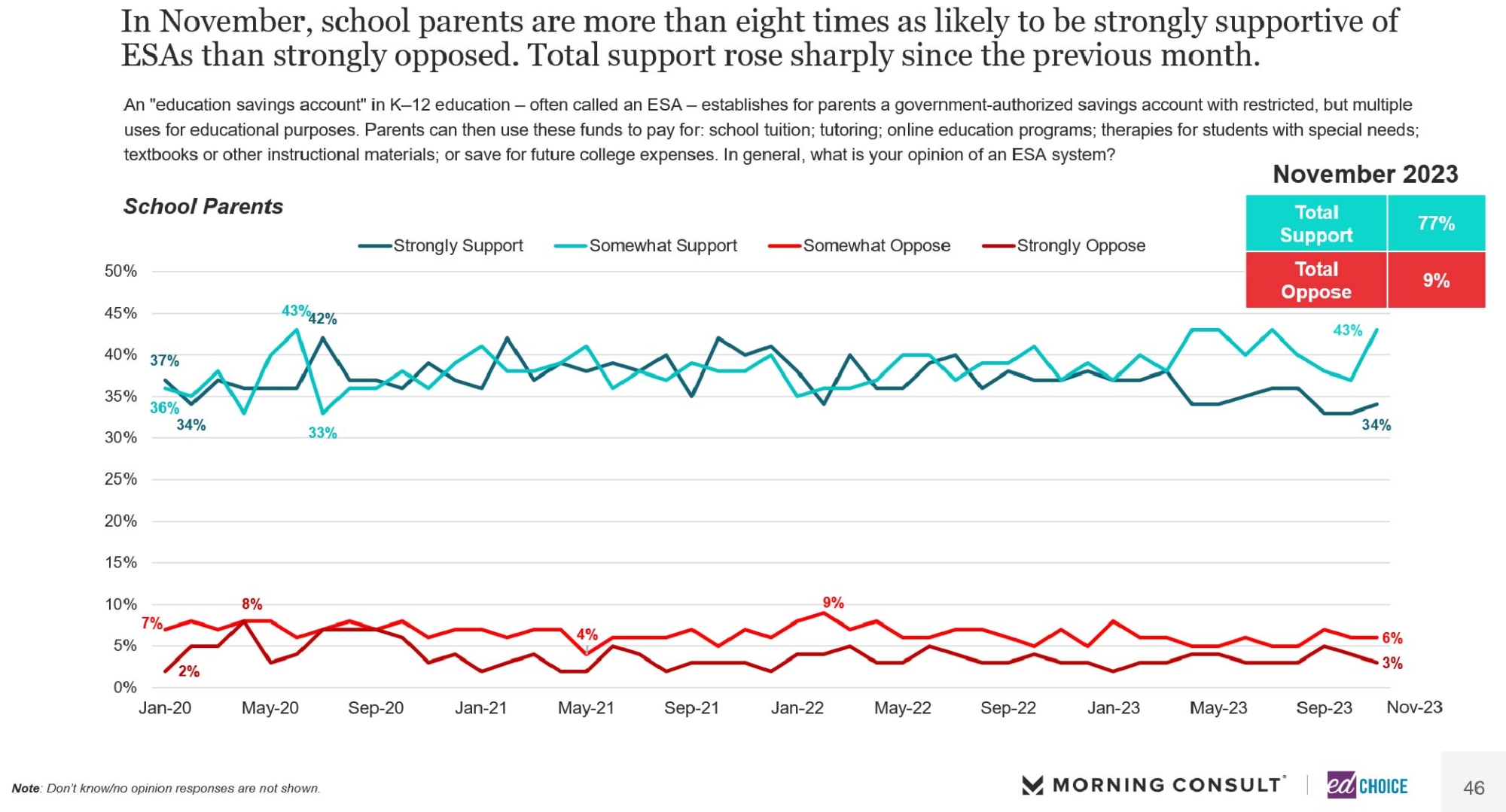
ESAs continue to be the most popular of the policies, occasionally reaching 80 percent support from parents. Looking at the support for ESAs among demographic groups consistently produces unexpected results as well. For example, in November, liberal respondents supported ESAs at a higher rate than conservative respondents. In May, roughly two-thirds of both Gen Z and Baby Boomer respondents supported ESAs.
Most surprising findings:
1. Absenteeism is high.
In September, we asked parents to estimate how many days of school their child missed during the previous school year. Nearly one in ten parents reported their child missed more than 11 full days of school during the previous school year. The majority of parents (55%) said their child missed between 0-5 days of school in the previous year.
The most interesting, perhaps alarming, finding regarding absenteeism came from our survey of teenagers in the fall of 2023. Nearly 1 in 5 teens reported missing more than 15 whole days of school during the previous school year. This result reinforced findings of the sharp increase in absenteeism that has taken place post-pandemic.
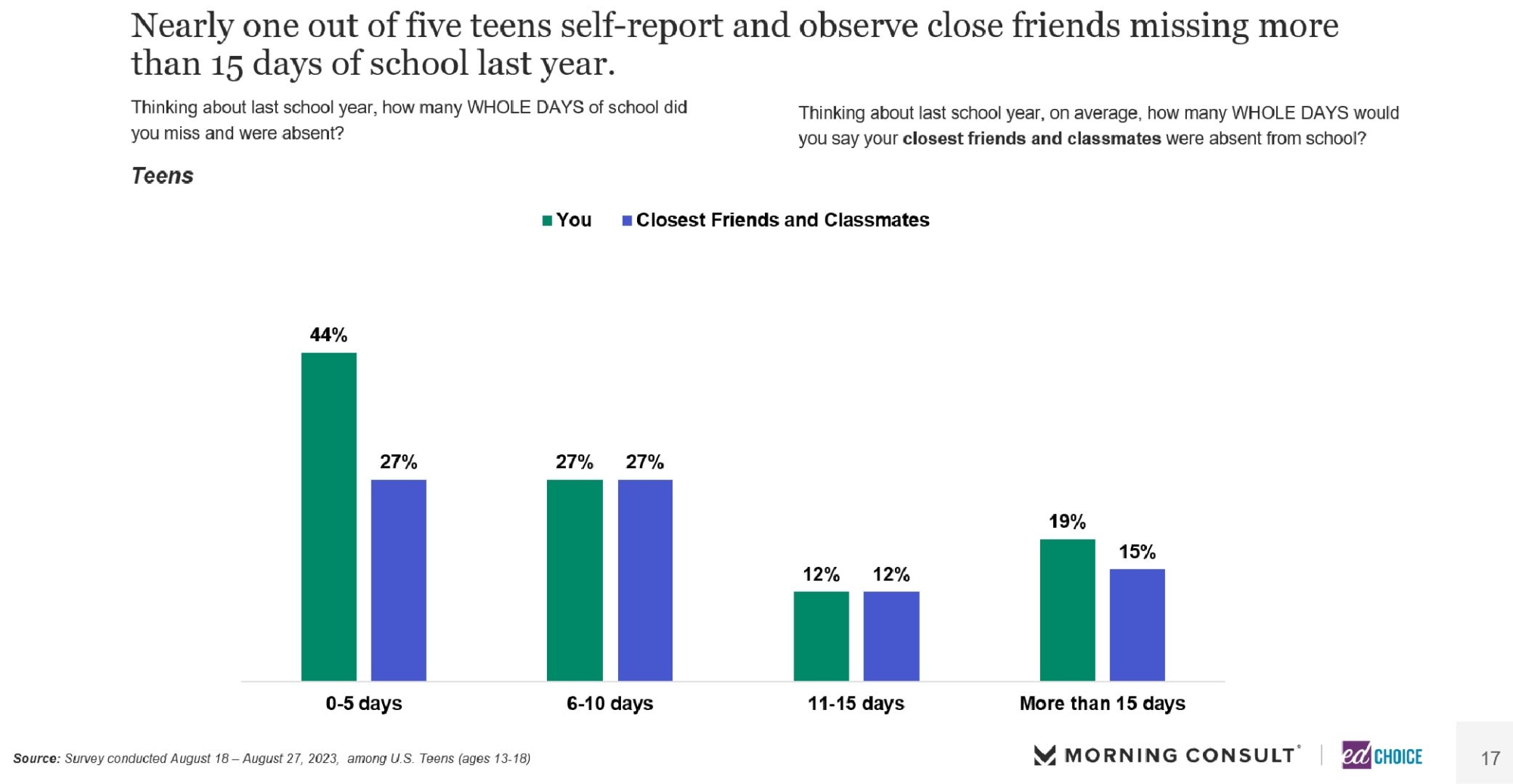
2. Is microschool enrollment growing?
In an attempt to learn about microschool enrollment, our February polling posed a split sample question to parents asking whether their child was enrolled in a microschool. Half of the respondents received the definition of a microschool in their question, while the other half did not. Interestingly, 8 percent of respondents reported their child was enrolled in a microschool regardless of whether they saw information explaining what a microschool was.
We were quite cautious to jump to any conclusion, as most research studying microschools estimates enrollment rests between 2-4% of students nationally. So, we asked the question in the following month’s survey, and every respondent receiving a definition of a microschool included in the question.
The result? More than 10 percent of parents said their child was enrolled in a microschool. While we should probably wait on more formal enrollment numbers before we conclude that microschool enrollment has increased to the levels seen in our polling, there is certainly excitement around the microschool movement overall.
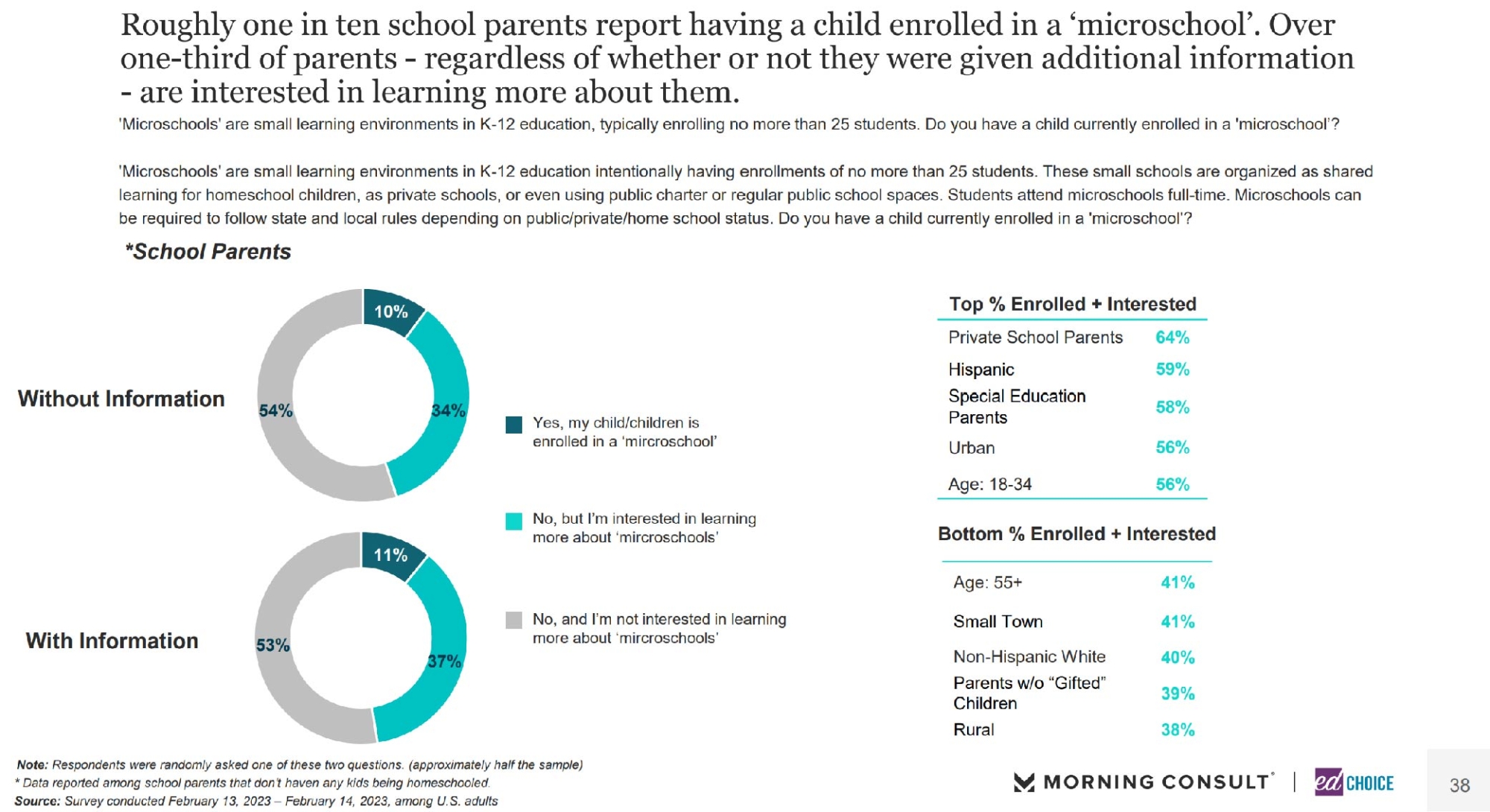
3. Parents are intrigued by the idea of a 4-day school week.
In May, we asked both parents and nonparents about the idea of a 4-day school week. More than 60 percent of parents were supportive of their child’s school replacing the traditional school week with a 4-day school week. Interestingly, only 43 percent of nonparents supported the idea. Furthermore, 50 percent of parents want their child’s school to offer the choice to switch to a 4-day school week. Parents cited worries like their child not being prepared for the next grade, losing interest in school, or having less structure or routine as their top concerns with a 4-day school week.
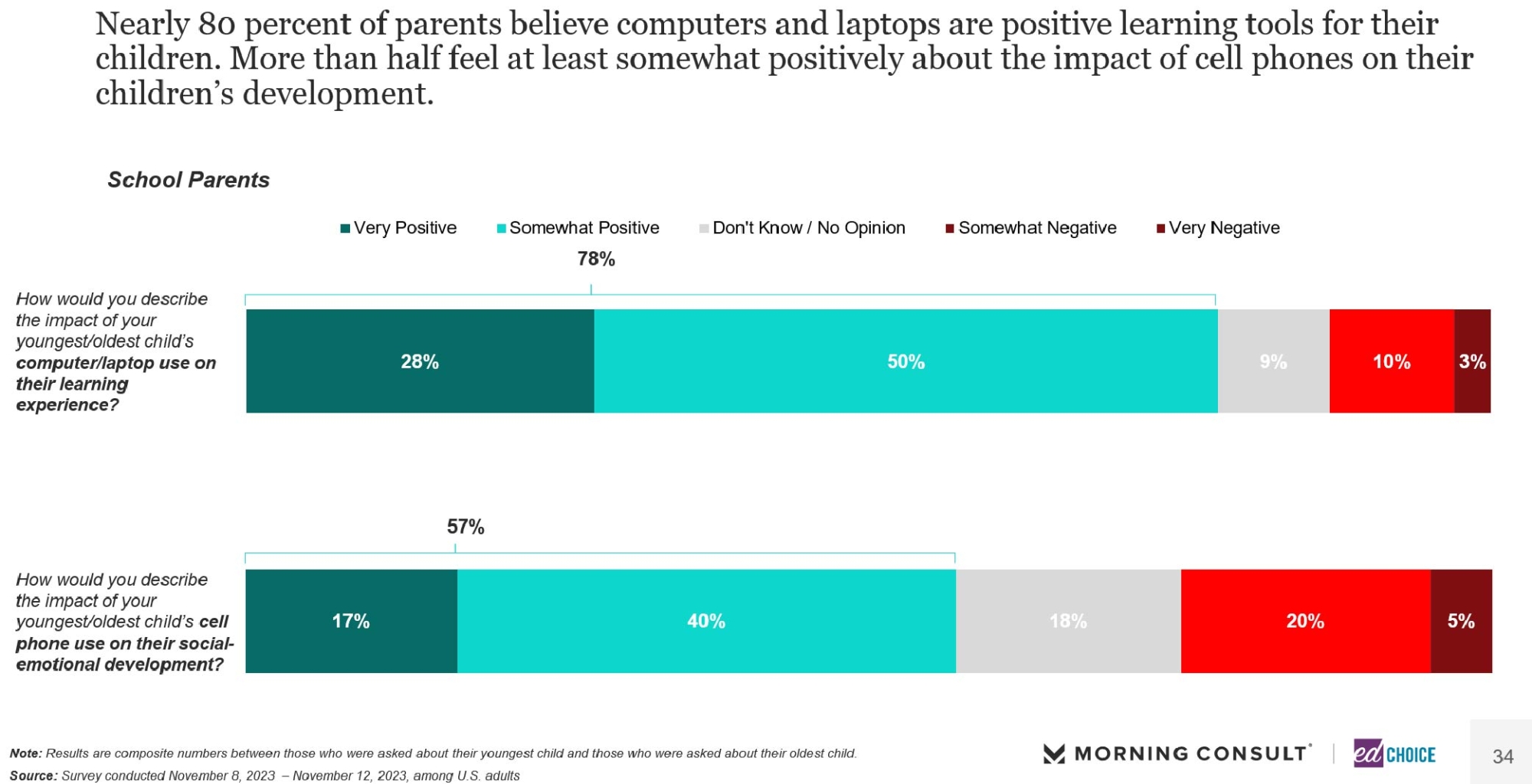
Future challenges:
1. Parents and teachers are at odds about artificial intelligence (AI) & technology in schools.
In June, we began including questions about AI in our surveys. While the majority of Americans were aware of AI, most consistently reported they hadn’t actually used such technology themselves. We saw similar results when we posed the same question to teachers in the fall.
As the topic of AI and tech in the classroom grew bigger in 2023, we added more in-depth questions, and observed some really interesting findings. For example, in November, only 39 percent of parents are concerned about the effects of AI on society in the future. Furthermore, in October, when looking at AI in the classroom, only 17 percent of teachers reported instances of AI-based plagiarism or cheating.
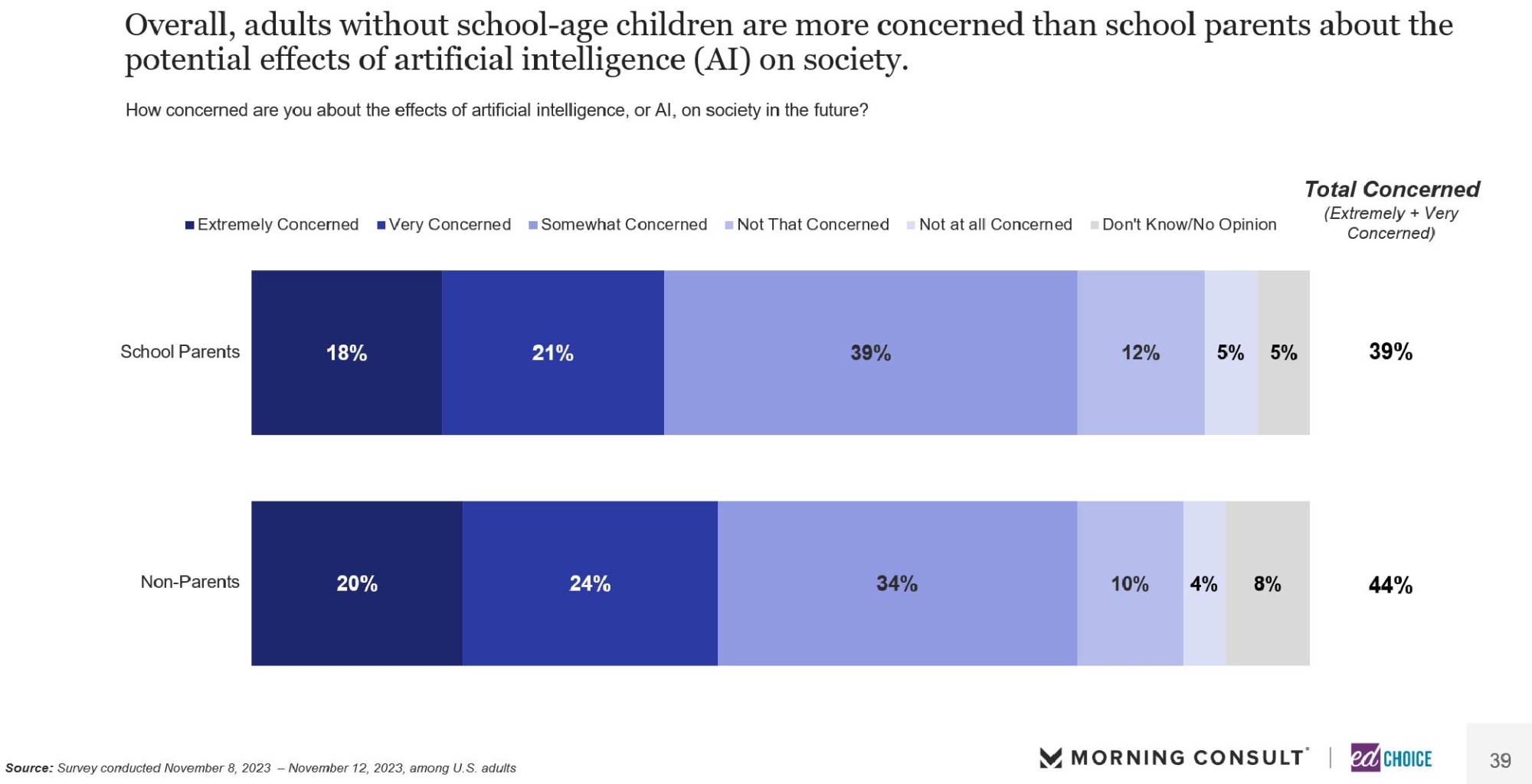
Cell phone use in schools has been another highly discussed topic. Most parents, roughly two-thirds, believe their child should have access to a cell phone at school. However, only roughly one-third of parents believe their child should have a cellphone in the classroom. Teachers and parents are misaligned when asked about the effect of cell phone use on the social-emotional development of children. In November, 57 percent of parents said cell phone use has a positive effect on their child’s social emotional development. When asked the same question, only 16 percent of teachers said they believe cell phone use has a positive effect on their students’ development.
2. School safety is on the minds of parents and school staff.
Throughout our 2023 polling, roughly half of parents consistently reported concern about the possibility of a violent intruder entering their child’s school. Results hovered around there for the majority of 2023, and increased in the months following the horrific tragedy that occurred in Nashville in March.
We also asked teachers and parents about their thoughts on whether teachers and school administrators should be able to carry firearms in school. Over half of parents (52%) were supportive of the idea, compared to only 42 percent of teachers.
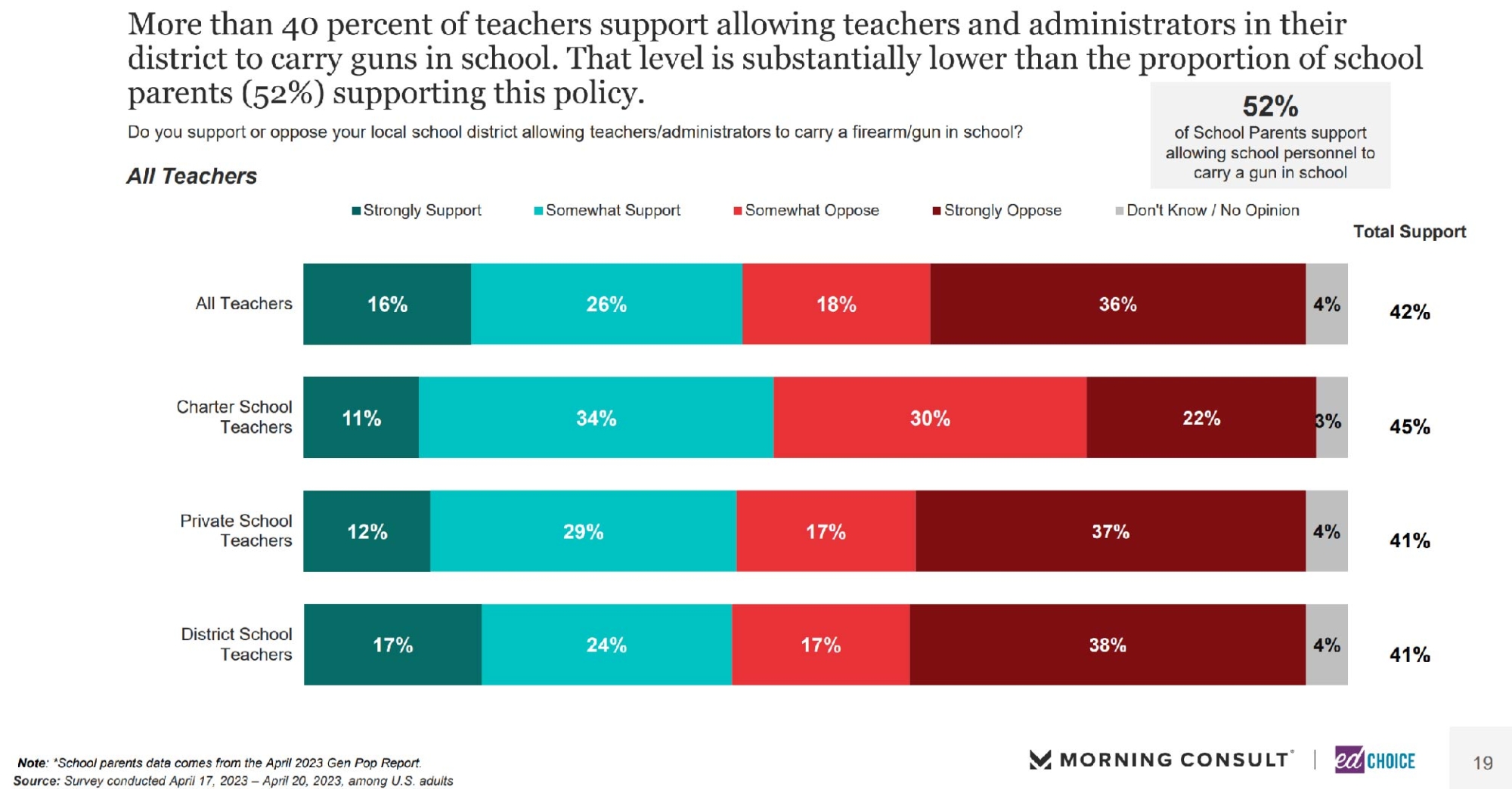
One interesting finding: when asked about how schools fare when handling issues like violent behaviors, guns, and bullying, roughly half of parents said their child’s school is handling those issues well. Our polling of teachers and teens in 2023 delivered contrasting signals, with only about one-third of both teachers and teens feeling that their school is handling those issues well.
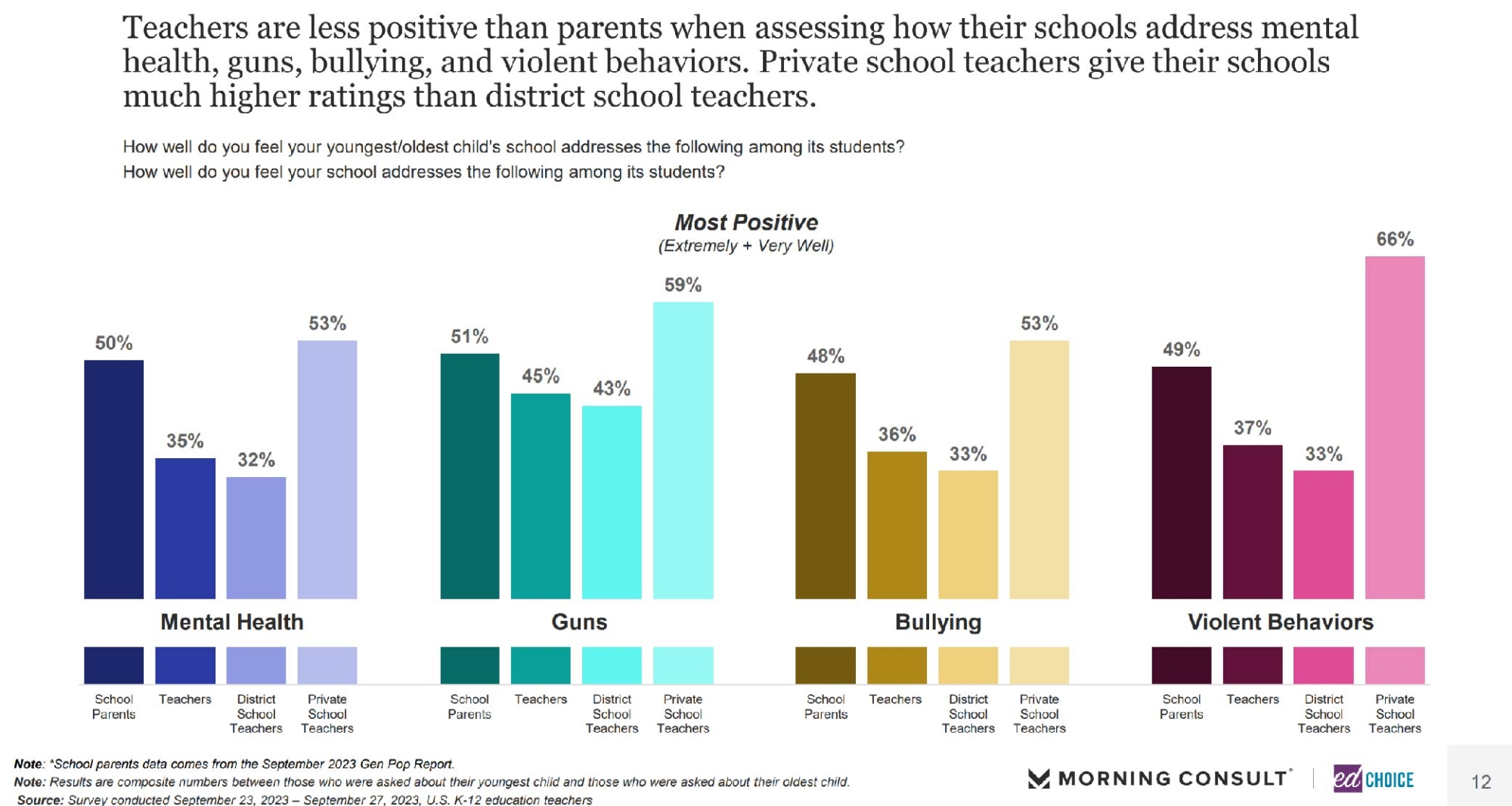
3. What should schools’ role be regarding the mental health crisis?
Mental health was another major topic of discussion in 2023, especially for children and young adults. So, we asked parents, teachers, and teenagers a series of questions exploring mental health topics. Teachers and teenager polling revealed they felt that schools inadequately handle mental health issues. In the fall, only 40 percent of teens and 35 percent of teachers said their school is doing a good job handling mental health. Parents, on the other hand, have been consistently more optimistic about their child’s school’s impact on mental health.
When asked about accessibility of mental health services within the school, 57 percent of teenagers said their school does offer such services, and teens’ demand for mental health services at their school is quite strong. Of the teenagers attending schools that do not offer mental health services, 65 percent said they would like their school to offer mental health support for those who need it.
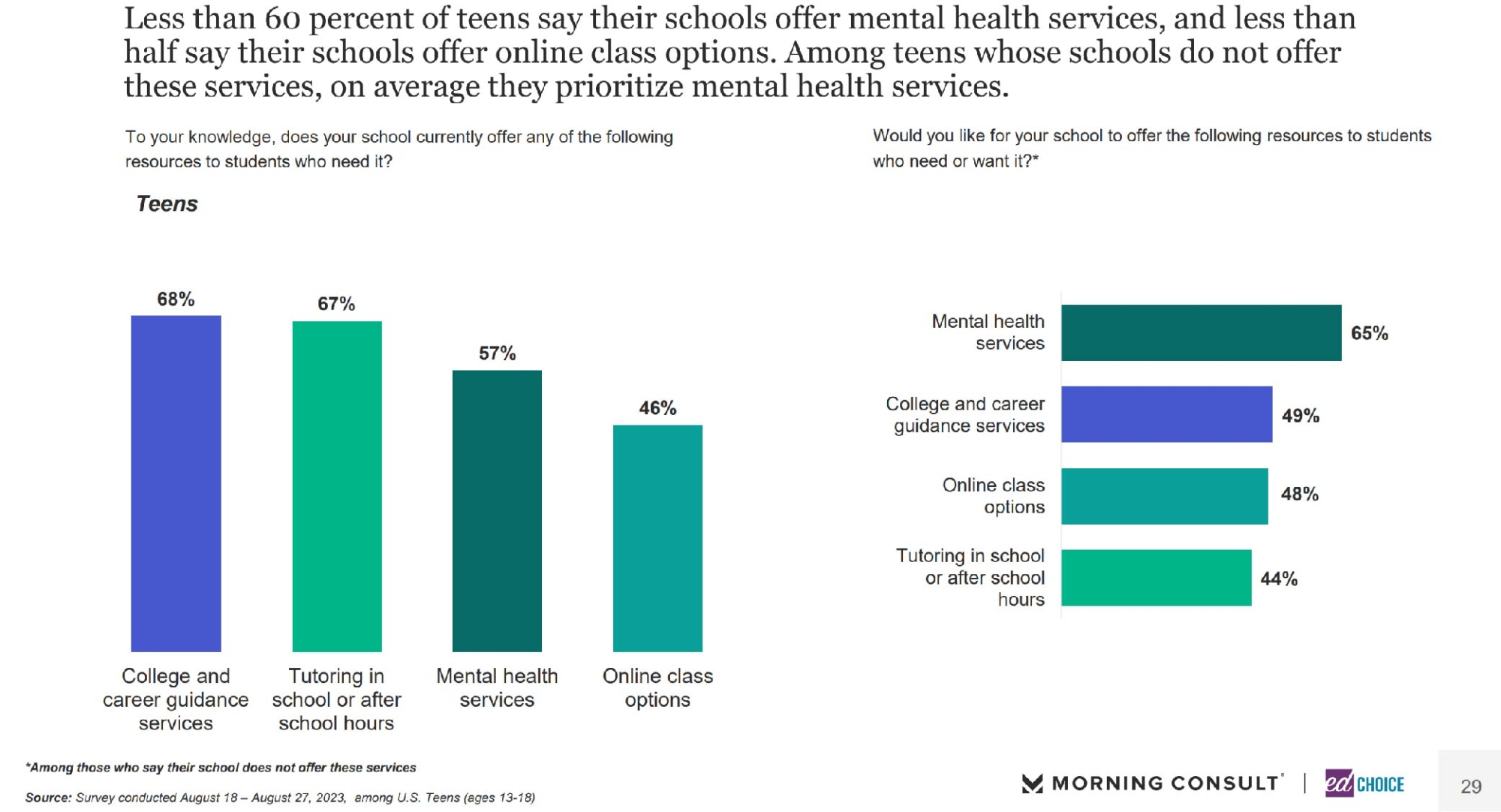
Parents’ opinions contrasted slightly. In October, nearly 60 percent of parents reported that their child’s school offers mental health services, but among the parents with children attending schools that do not offer any mental health support, only 47 percent say they want their child’s school to offer mental health support for students. Perhaps the most damning piece of evidence which suggests schools are struggling to help their students with mental health: only 37 percent of teenagers said they felt their school supported their mental health.
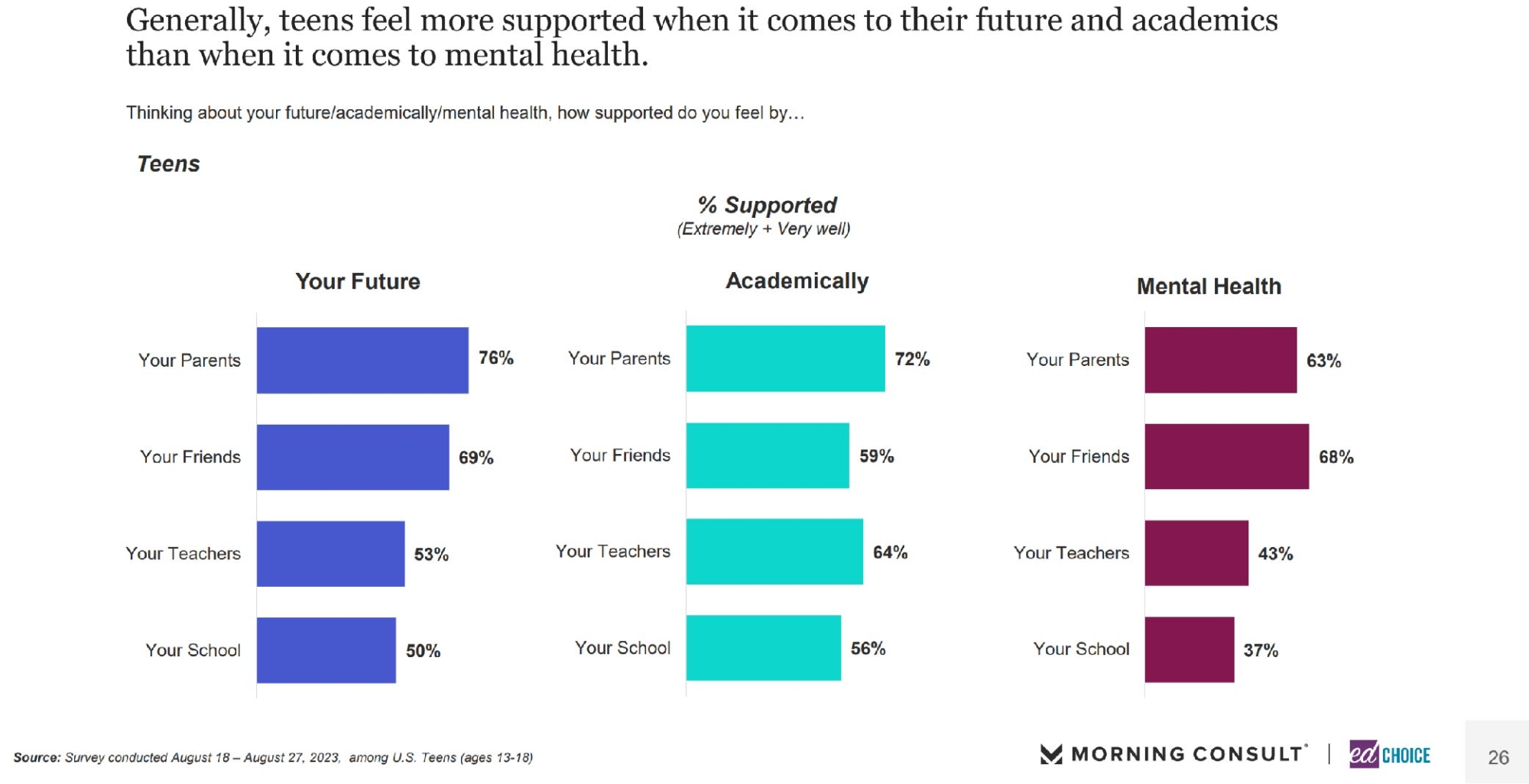
Visit the EdChoice Public Opinion Tracker site to access past reports, crosstabs, questionnaires, and our national and state dashboards. All are updated monthly. We also provide a more in-depth description of our research and survey methods.
Our K–12 education polls archive is updated on a rolling basis, roughly a few times each month. Please don’t hesitate to let us know if we are missing any surveys, or if there are accidental errors.




